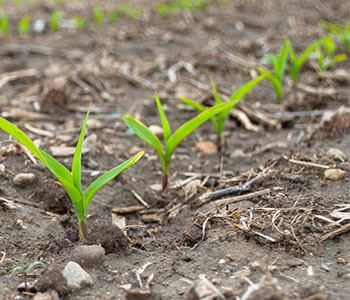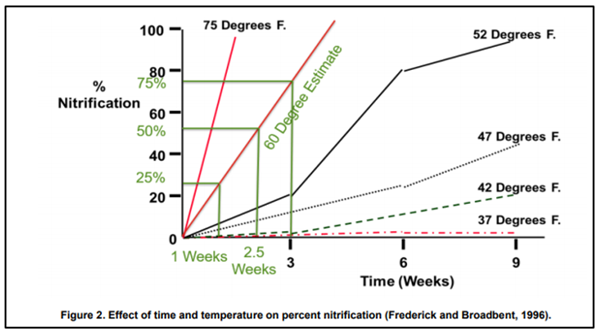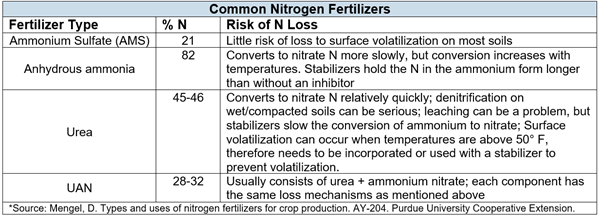CFS Growing Insights - 5.22.2019
May 22, 2019


Weather Update
Across the U.S. corn belt, the week ending May 19th marked the slowest corn planting progress in the last 30 years at 49% planted across the U.S (5-year average is 80%). Fortunately, there were enough suitable days for fieldwork last week, as the USDA estimates MN at 56% of corn planted (5-year average is 83%) and 22% of soybeans planted (5-year average is 57%).
Planting progress varies across the CFS territory, with spots 80%+ done with corn, and some only at 60% or less. 1”-2”+ of rain fell across southern MN last week, pushing many locations over 1” above average rainfall since May 1st, 2019, and a few days behind on GDU’s with the latest cool weather.
Agronomic Considerations for the Week:
- Planting Conditions: With varying weather and planting conditions, it’s the right time to start diagnosing any potential corn emergence issues. It takes 100-120 GDD’s to get corn to emerge, but issues can often be seen while corn is still below-ground. You’ll notice the radicle root emerges first from the seed and the coleoptile second. Seed with a poorly developed radicle or coleoptile/coleoptile tip that’s brown or yellow can be caused by disease or cold soil conditions (imbibitional chilling). Roots and the emerging coleoptile should be firm and a healthy creamish-white color. Coleoptile (shoot) unfurled and leafing-out underground is a sign of a poor seedbed and premature exposure to light in cloddy soil, planting too deep, compaction or soil crusting, and extended cool/wet conditions.
- Black cutworm moths: (BCW) use prevailing winds to ride from the south into southern MN, and moth traps from the last 2 weeks have shown significant levels entering the state. Fields worked and planted later compared to moth arrival and fields planted without above-ground insect protection from Herculex I or Viptera have the highest potential for damage. The University of MN recommends to start scouting corn before June 1st, and look for leaf feeding on emerged corn or weeds right away (Black Cutworm can feed on lambsquarters and ragweed), and transition to look for corn that’s cut below-ground as larvae get bigger. The economic threshold for black cutworm in corn is 2-3% of the plants cut or wilted when the larvae are less are than ¾” long, and 5% cut plants when larvae are large.
- Effects of Later Planting & Weed Compitition: In some local fields, weeds have gotten a head start in front of the crop emerging, and many growers are tempted to postpone herbicide applications until more weeds emerge, and allow the residual to work later in the year. Weeds impact yields primarily by competing with the crop for light, water and nutrients, but recent data shows that yields can be affected before the crop even emerges. Corn seedlings can lose up to as much as 3.3 bushels per acre per day of yield loss when weeds aren’t controlled as they emerge. Corn plants can detect the presence of weeds as it emerges, and will regulate plant growth to avoid competition, crating irreversible yield loss. Yield loss from weed competition won’t show up until later on in the growing season, but can be detected from a longer duration between pollen-shed and silk emergence from plants impacted by early weed competition. It’s critical to start clean and stay clean, and utilize herbicide earlier rather than later!

Nitrogen Management
Heavy rains caused corn nitrogen deficiencies across the CFS territory in 2018, whether the nitrogen loss was due to leaching or denitrification. With planting delays and wet weather in 2019, nitrogen availability is a critical topic. Saturated soils and excess rain increase the chances of nitrogen loss through 3 different ways:
- Leaching (downward movement of nitrate-N with water)
- Volatility losses due to surface applied urea or UAN
- Denitrification losses due to saturated soils
Denitrification occurs when soils become extremely saturated (water-filled pore space in soils exceeds 60%) and oxygen levels in the soil decrease. A variety of bacteria use the oxygen in nitrate for respiration, and as the oxygen decreases, microbes convert more of the nitrate to N2 gas. N loss of -10% can occur if soil is saturated for 3 days & -10% loss each additional saturated day, equal to the potential of 30% loss in 5 days. This time of the year, denitrification is negligible below 50 °F soil temperatures, but risks do increase with warming soil temperatures.
The good news is that only about 20 pounds of uptake has occurred once corn reaches V8. Nitrogen demand isn’t high early in the season, plus soil temperatures have remained moderate, which delays the conversation of nitrogen to nitrate. 50% of N uptake comes between V10 & R1 and during the V10 to V14 growth stages, corn requires the availability of 7.8 lb. N/day, meaning two-thirds of the total N plant uptake is acquired by VT/R1, with 1/3 left post-VT, so N levels will need to be assessed via nitrate samples shortly to understand levels and sidedressing needs. Highest risk of N loss applications includes fall applications of nitrogen without a stabilizer. The least risky program is a split application of N with a stabilizer in the spring with sidedressing, obviously, with its timing coinciding with the largest N demands. Refer to the table below to understand your N risks dependent on your N fertilizer, and contact your local CFS representative to learn about our NitrateNow nitrogen program that provides fast, accurate, in-season, geo-referenced measurements of soil nitrate.

